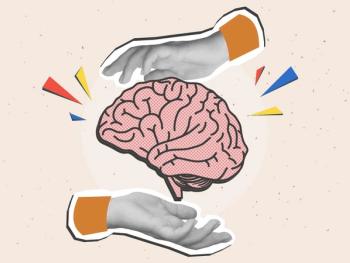Follow Your Patient, Not A Manual
Depending on how you look at it, manuals have either played a heroic role in the history of psychotherapy or have been responsible for its degradation.
TALKING THERAPIES
Depending on how you look at it, manuals have either played a heroic role in the history of
Without manuals, we could not have built the substantial evidence base that proves the efficacy of psychotherapy and justifies its compensation.
But manuals are also accused of many sins: (1) corrupting the art of psychotherapy in pursuit of its science; (2) cheapening the therapeutic relationship by constraining it within a rigid and artificial strait jacket; (3) distorting psychotherapy training; and (4) increasing the competition among therapies and retarding their integration.
Defenders of
We must admit to them, to ourselves, and to you that we were unwitting cogs in the machine that was responsible for the undeserved power psychotherapy manuals have gained in clinical work, training, and in decisions about what forms of treatment deserve to be covered by insurance.
During the early 1980s, we first met as members of the
It is among our proudest career accomplishments that our NIMH group funded the early controlled studies of cognitive therapy, behavior therapy, cognitive-behavior therapy, dialectic-behavior therapy, and family therapy. But we are correspondingly rueful that the need for manuals in research studies resulted in their over-valuation in clinical, educational, and reimbursement decision making.
It is noteworthy that the Becks, who pioneered CBT manuals to help in research studies, have been opposed to their use in training and clinical practice. They recognized (as do most experienced clinicians) that it is impossible to simultaneously follow the patient if you are also slavishly trying to follow the manual. The manual-driven therapist becomes distracted, unemphatic, robotic, and unintuitive in adopting an attitude of do-what-the-manual-demands.
Some research studies have found treatments that more closely follow the letter of the manual achieve better outcomes than those that drift away. But this almost surely reflects correlation, not causality. Much more likely, patients who are easy-going and have good outcomes allow therapists to stick close to the manual, while the tougher patients, with less optimistic outcomes, require therapists to be more flexible, creative, and less worshipful to the manualized instructions.
It is crucial to flexibly follow the patient; not slavishly worship the manual. People are complicated and their problems are far too individual and specifically personal to ever be comprehended within any pat set of rules. It is not harmful to read manuals as a general background to understand the principles of any given therapy, but it is soul deadening to follow a manual like an automaton.
Manuals have another, more general and unforeseen detrimental effect. They encourage competition among therapies—emphasizing their differences as well as minimizing their similarities and complementarity.
Combining techniques is the best way of treating most patients—not sticking to manuals that atomize therapies and encourage reductionism. Psychotherapy integration is perhaps the most crucial topic in our field and deserves its own blog(s). Stay tuned for much more on this in later blogs.
In our fourth episode of Talking Therapy, we discuss the issues covered in this blog in more depth, with some lame jokes thrown into the mix. Watch us
Dr Frances is professor and chair emeritus in the department of psychiatry at Duke University. Dr Goldfried is distinguished professorin thepsychology department at Stony Brook University. Find them on Twitter @AllenFrancesMD and @GoldfriedMarvin.
Newsletter
Receive trusted psychiatric news, expert analysis, and clinical insights — subscribe today to support your practice and your patients.





